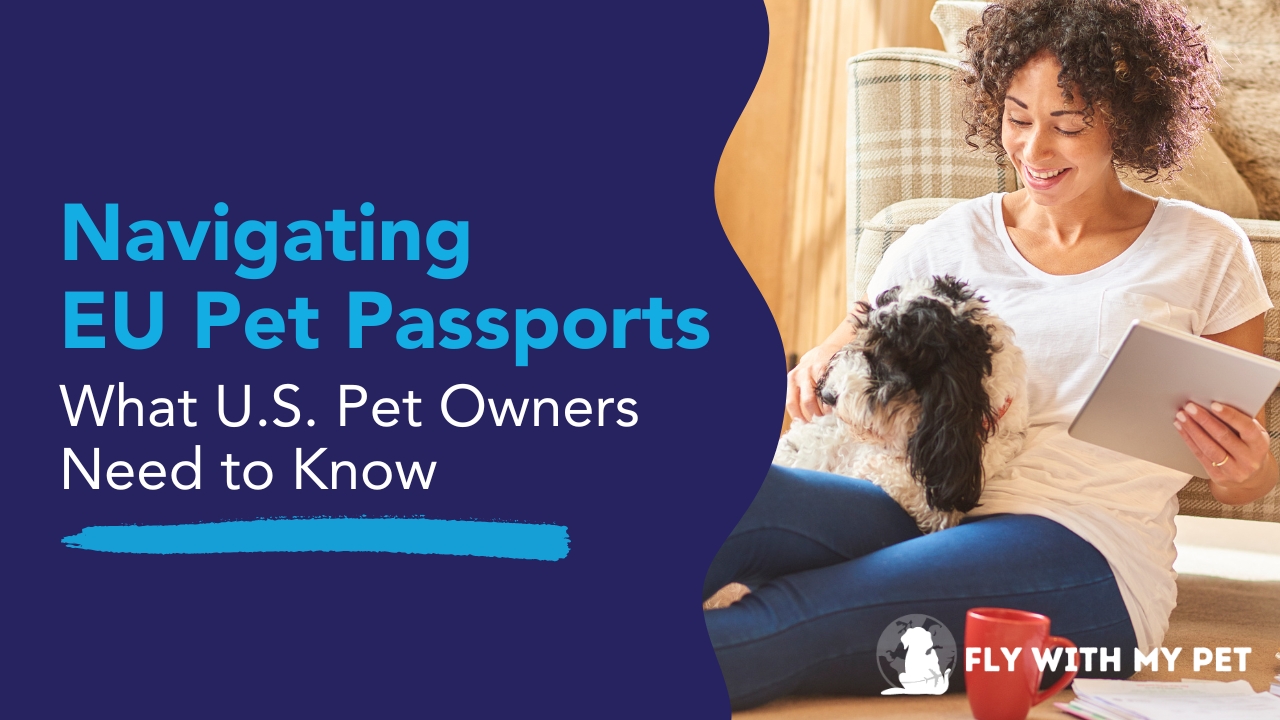
Traveling internationally is an exciting adventure, and for many pet owners, leaving their furry friends behind is not an option. If you’re a U.S. resident planning a trip to Europe with your pet, you’ve probably heard about the EU Pet Passport. But what exactly is it, and how does it impact your travel plans? In this blog post, we’ll demystify the EU Pet Passport system, explain how it affects U.S. travelers, and discuss the U.S. equivalent for pet travel documentation.
What Is an EU Pet Passport?
The EU Pet Passport is an official document that simplifies pet travel within the European Union. It contains detailed information about your pet, including identification details, vaccination records, and health status. The passport is designed for dogs, cats, and ferrets, allowing them to move freely between EU member countries without undergoing quarantine or additional health checks.
Key Features of the EU Pet Passport:
- Microchip Information: Verifies your pet’s identity.
- Rabies Vaccination Details: Confirms up-to-date rabies vaccinations.
- Other Vaccinations and Treatments: May include details on other necessary vaccinations or treatments, such as tapeworm treatment.
How Does It Impact U.S. Travelers?
As a U.S. resident, you cannot obtain an EU Pet Passport before arriving in Europe. The EU Pet Passport is only issued by authorized veterinarians within EU member states. However, this doesn’t mean you can’t travel with your pet to Europe; it just means the process involves a different set of documents and requirements.
Pre-Travel Requirements for U.S. Pets:
- Microchipping: Your pet must be microchipped with an ISO-compliant chip.
- Rabies Vaccination: Administered after the microchip implant and at least 21 days before travel.
- Health Certificate: Obtain an EU Health Certificate (also known as the EU Veterinary Certificate) endorsed by the USDA.
Understanding the EU Health Certificate:
- Validity: The certificate is valid for entry into the EU within 10 days of issuance and allows travel within the EU for up to four months.
- Endorsement: Must be endorsed by a USDA-accredited veterinarian and the state USDA office.
- Language Requirements: The certificate should be in the language of the first EU country you enter.
To better understand travel requirements based on your pet and travel destination, simply fill out our Pet Travel Assistant form, and we’ll send you a handy list of all the documents and steps you’ll need to ensure your pet’s safe and happy travels.
Steps for U.S. Residents Traveling to the EU with Pets
- Plan Ahead: Start the process at least two months before your departure date.
- Visit a USDA-Accredited Veterinarian:
- Microchip your pet if not already done.
- Ensure all vaccinations are up to date.
- Discuss any additional treatments required.
- Obtain the EU Health Certificate:
- The vet completes the certificate.
- Send it to your state’s USDA office for endorsement.
- Check Airline Requirements:
- Airlines may have additional rules for pet travel.
- Reserve space for your pet well in advance.
- Upon Arrival in the EU:
- Enter through a designated Travelers’ Point of Entry.
- Present all documentation to customs officials.
The U.S. Equivalent for Pet Travel
While the U.S. doesn’t have a “pet passport” similar to the EU’s, it does issue International Health Certificates for pets traveling abroad. These certificates confirm that your pet is healthy and meets the destination country’s entry requirements.
Key Documents for U.S. Pet Travel:
- International Health Certificate (APHIS Form 7001):
- Completed by a USDA-accredited veterinarian.
- Valid for a specific period, usually 10 days for international travel.
- Vaccination Records:
- Proof of rabies vaccination and others as required.
- Microchip Information:
- Necessary for many international destinations.
Tips for a Smooth Journey
- Stay Informed: Entry requirements can change, so always check the latest regulations from official sources like the USDA and the EU.
- Keep Copies of All Documents: Have both physical and digital copies readily accessible.
- Consult Professionals: Work closely with your veterinarian and consider hiring a pet travel specialist if the process feels overwhelming.
Traveling to Europe with your pet involves careful planning and adherence to specific regulations, but it’s entirely achievable with the right preparation. While U.S. residents can’t obtain an EU Pet Passport before arrival, the EU Health Certificate serves as a functional equivalent for entering and traveling within the EU. By understanding the requirements and starting the process early, you and your furry companion can enjoy a hassle-free European adventure.
About FlyWithMyPet.com
At FlyWithMyPet.com, we’re dedicated to making pet travel as seamless as possible. Whether you’re hopping across states or crossing oceans, our resources and expert advice help ensure that you and your pet are prepared for the journey ahead. Our Pet Travel Assistant can send you a handy list of all the documents and steps you’ll need to ensure your pet’s safe and happy travels and our Find-a-Vet tool helps you find an accredited veterinarian near you.
Prepare for your next trip with your dog or cat and obtain vet travel certificates with ease!
Safe travels!
